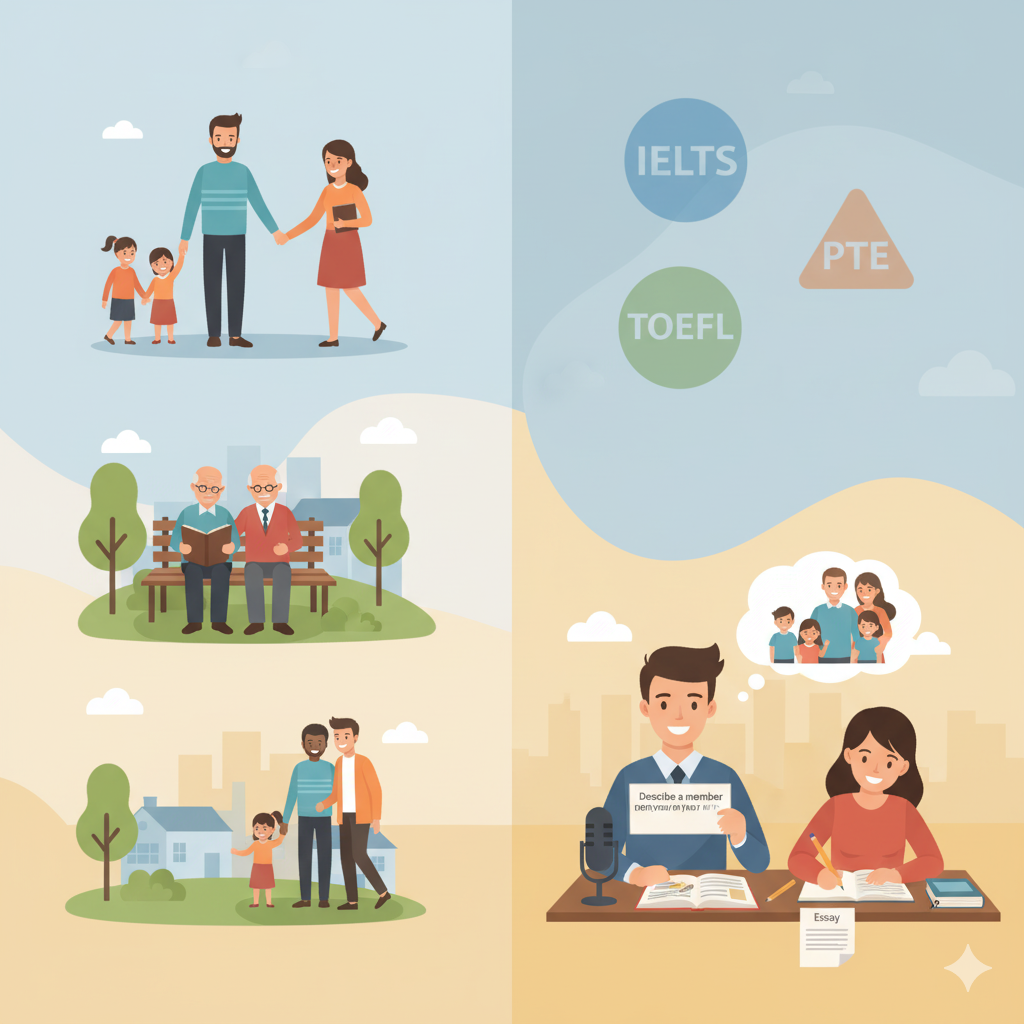
Family and relationships are recurring topics in IELTS, TOEFL, and PTE, particularly in Speaking Part 1, Part 2 cue cards, and Writing Task 2 essays. Examiners expect candidates to use precise and natural collocations when discussing themes such as parenting styles, generational differences, marriage, and divorce trends. This post provides a well-curated list of collocations, along with exercises and activities to help learners practice them effectively for both Writing and Speaking tasks.
Family & Relationships 👨👩👧👦
Parenting styles
- strict discipline → Strict discipline may produce obedience but can harm creativity.
- authoritarian parents → Authoritarian parents set rules with little room for negotiation.
- permissive upbringing → A permissive upbringing can lead to lack of self-discipline.
- supportive environment → A supportive environment helps children thrive academically and emotionally.
- emotional bonding → Emotional bonding between parent and child is crucial for development.
- single-parent families → Single-parent families often manage with limited time and resources.
- parental involvement → Parental involvement in schooling boosts student achievement.
- child neglect → Child neglect has serious long-term psychological consequences.
- positive reinforcement → Positive reinforcement encourages desirable behaviour more than punishment.
- nurturing care → Consistent nurturing care fosters secure attachments in infants.
Generational differences
- generation gap → A generation gap can complicate family decision-making.
- traditional values → Older generations sometimes stress traditional values and conformity.
- modern lifestyle → Many young people prefer a more modern lifestyle than their parents.
- cultural shift → Rapid cultural shifts change expectations about careers and marriage.
- digital natives → Digital natives find new technologies intuitive and essential.
- elderly population → An ageing elderly population raises pension and care concerns.
- family conflicts → Family conflicts often arise from differing expectations across generations.
- intergenerational communication → Open intergenerational communication reduces misunderstandings.
- respect for elders → Respect for elders is a deeply rooted cultural norm in many places.
- changing attitudes → Changing attitudes toward gender roles reflect broader social change.
Marriage and divorce trends
- marital stability → Economic pressures can reduce marital stability in young couples.
- divorce rates → Some countries have experienced rising divorce rates over decades.
- cohabiting couples → Cohabiting couples may choose to delay marriage for financial reasons.
- long-term commitment → Long-term commitment requires communication and compromise.
- domestic disputes → Domestic disputes sometimes lead to legal and social intervention.
- child custody → Child custody decisions prioritize the child’s best interests.
- financial independence → Financial independence empowers individuals to leave unhealthy relationships.
- marital breakdown → Marital breakdown can affect children’s emotional wellbeing.
- wedding expenses → Rising wedding expenses force some couples to choose smaller ceremonies.
- prenuptial agreements → Prenuptial agreements clarify financial expectations before marriage.


Pingback: Essential Collocations for IELTS, TOEFL, and PTE: 10 Major Topics - Goat Guru English